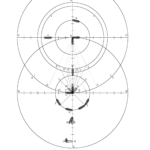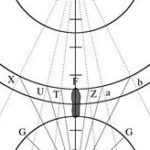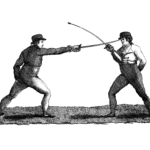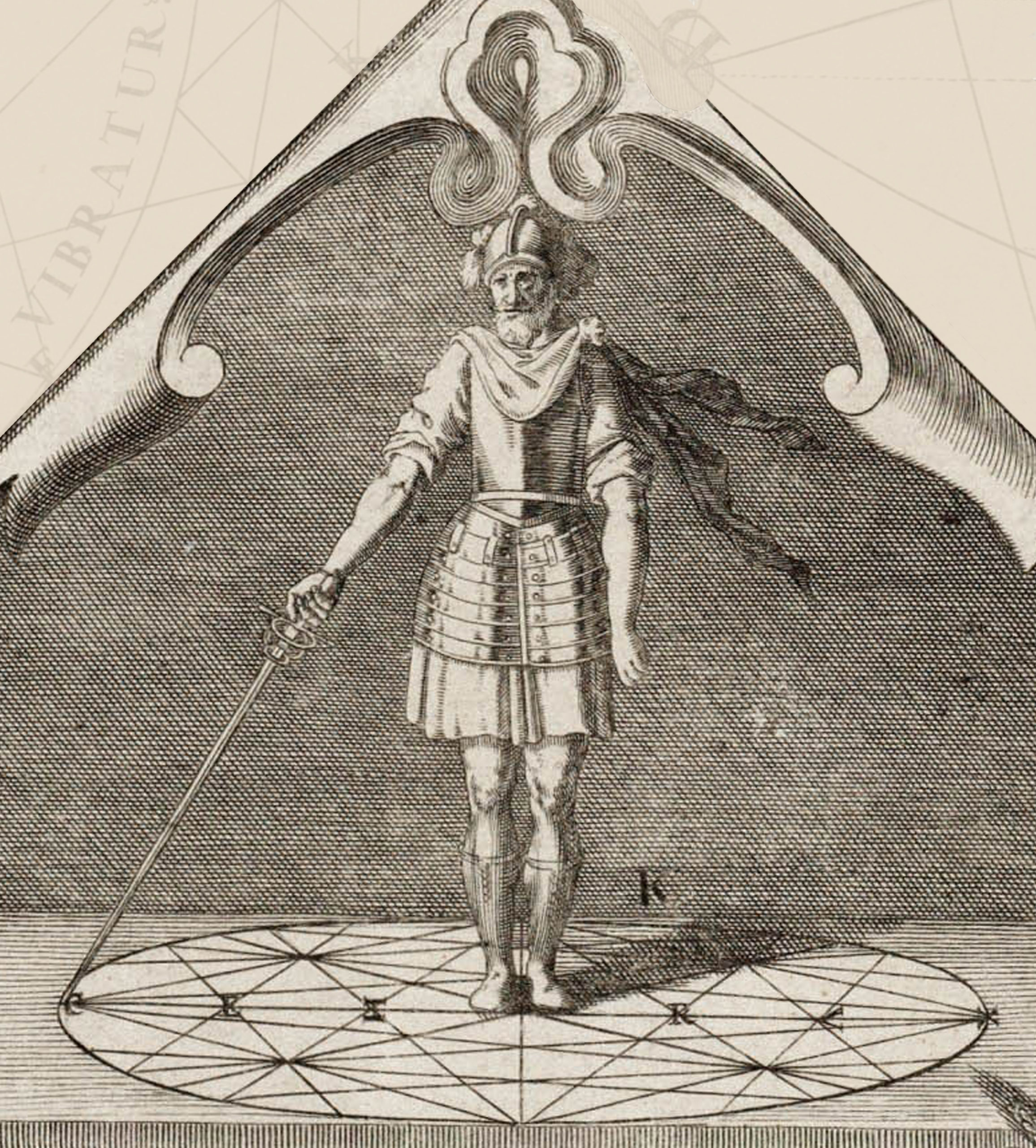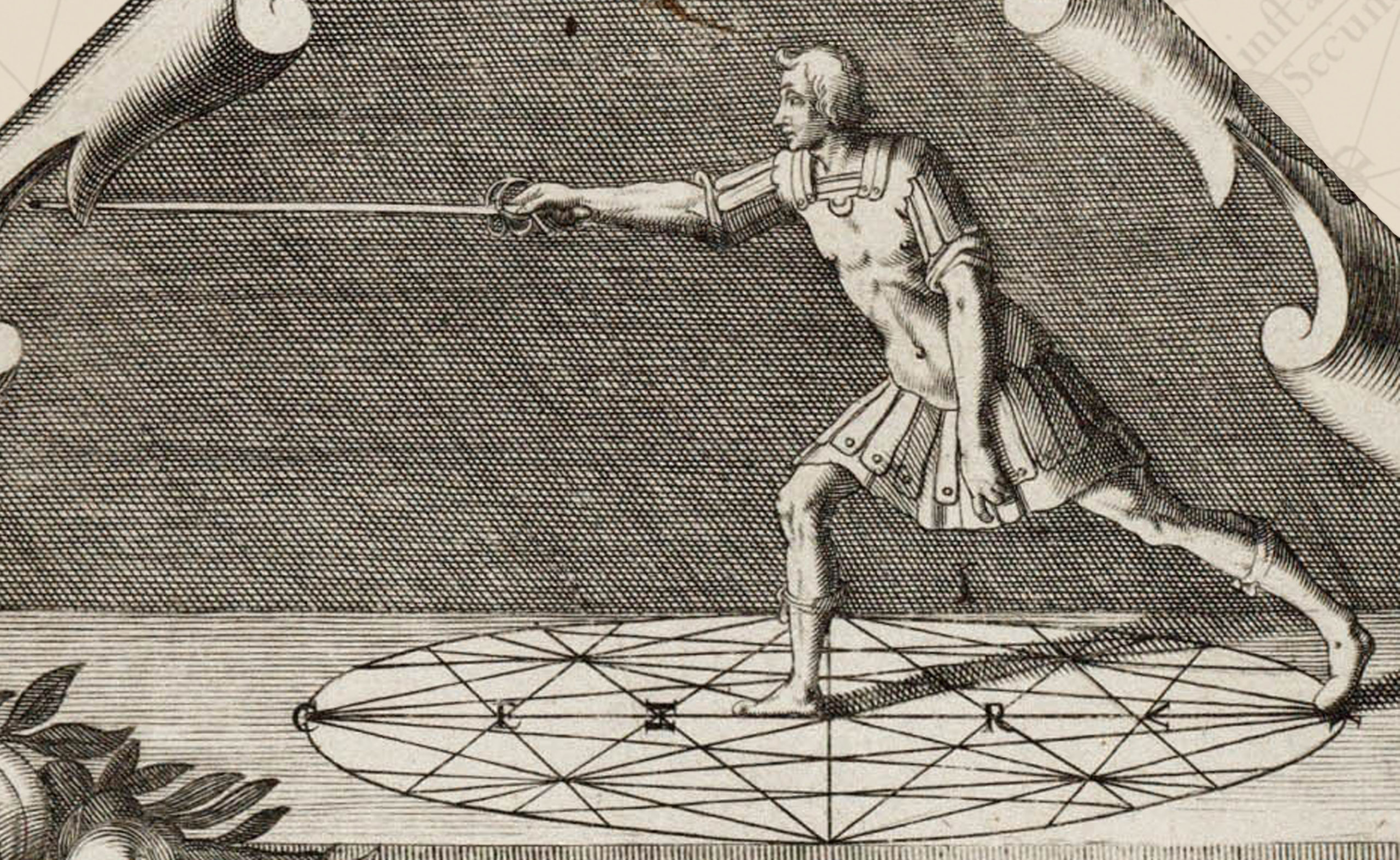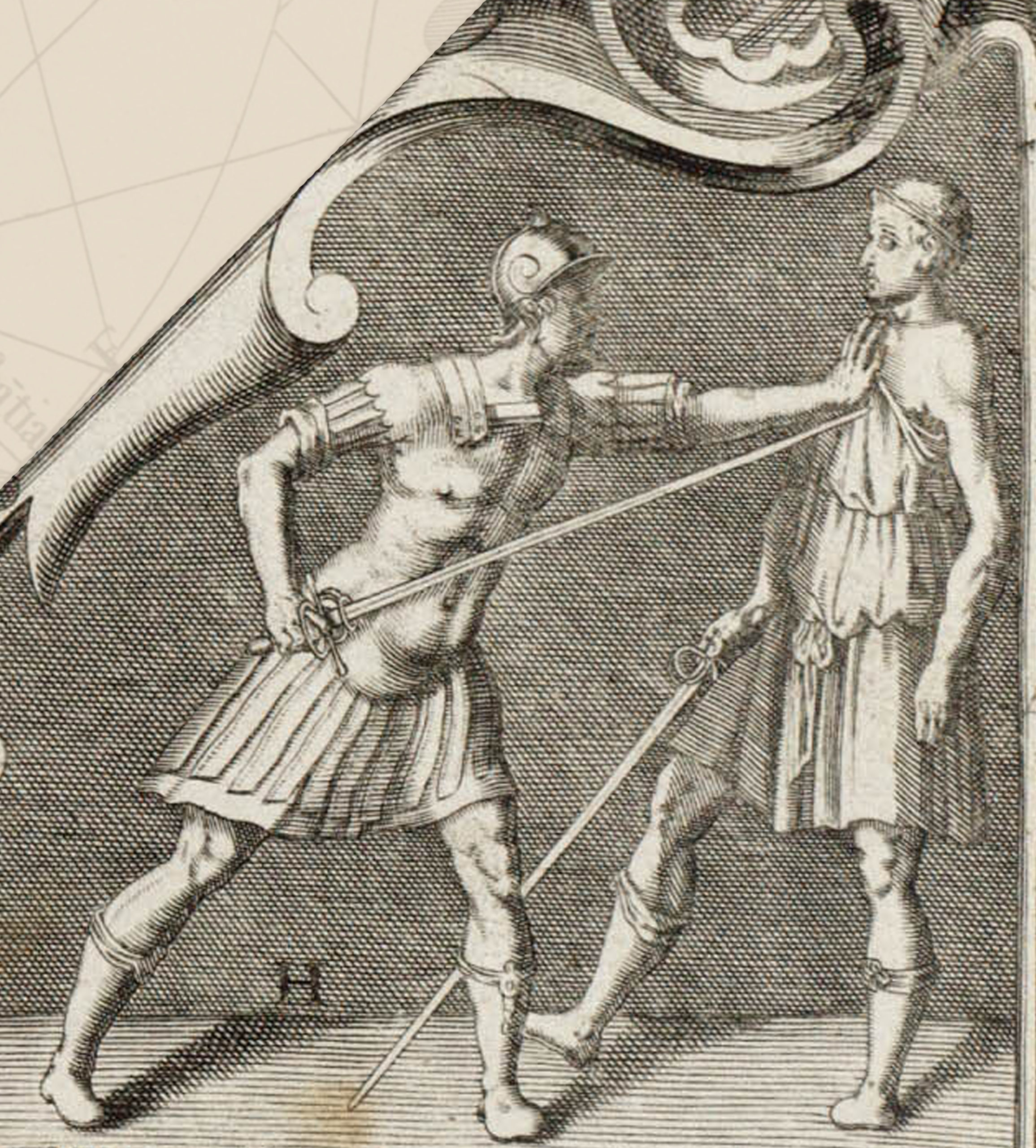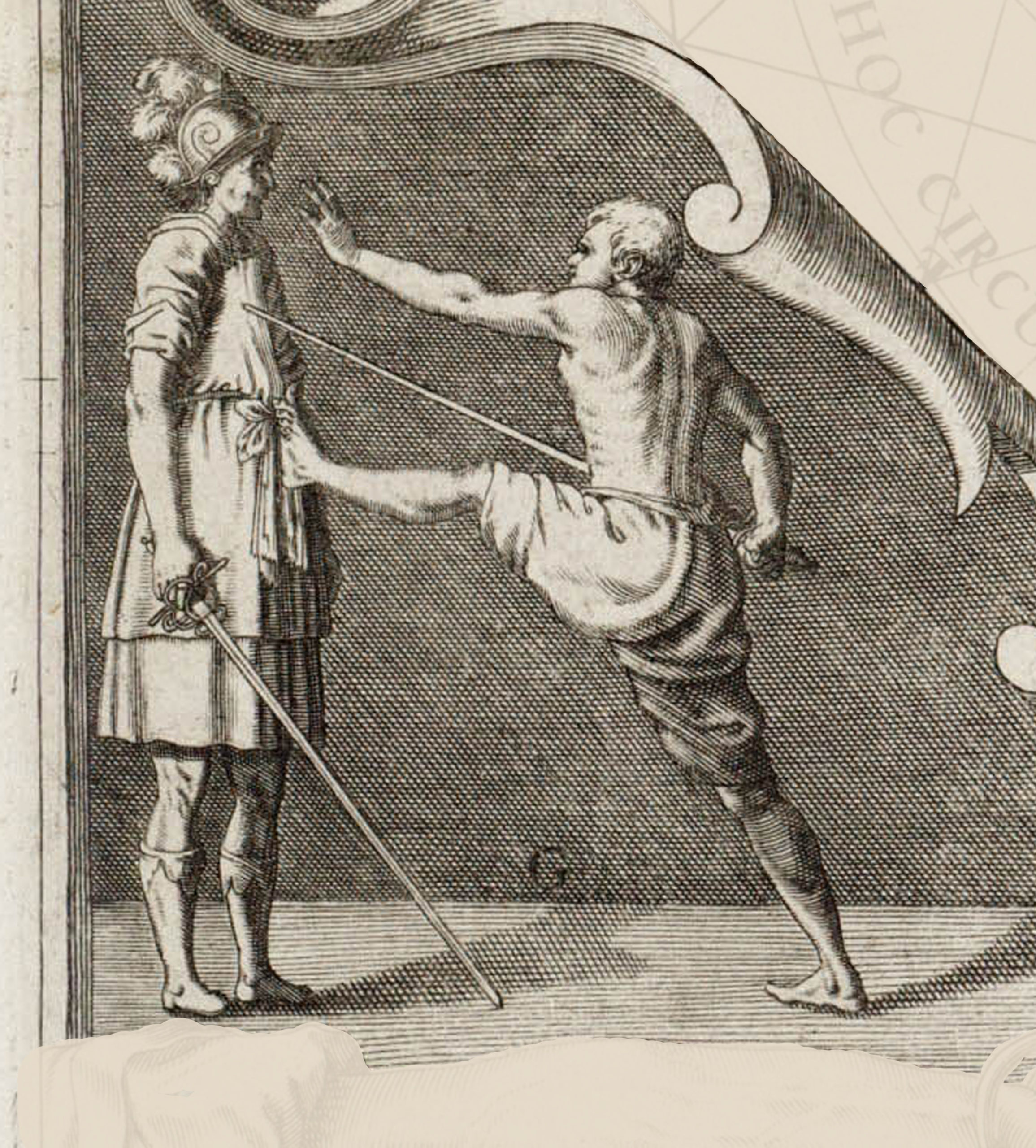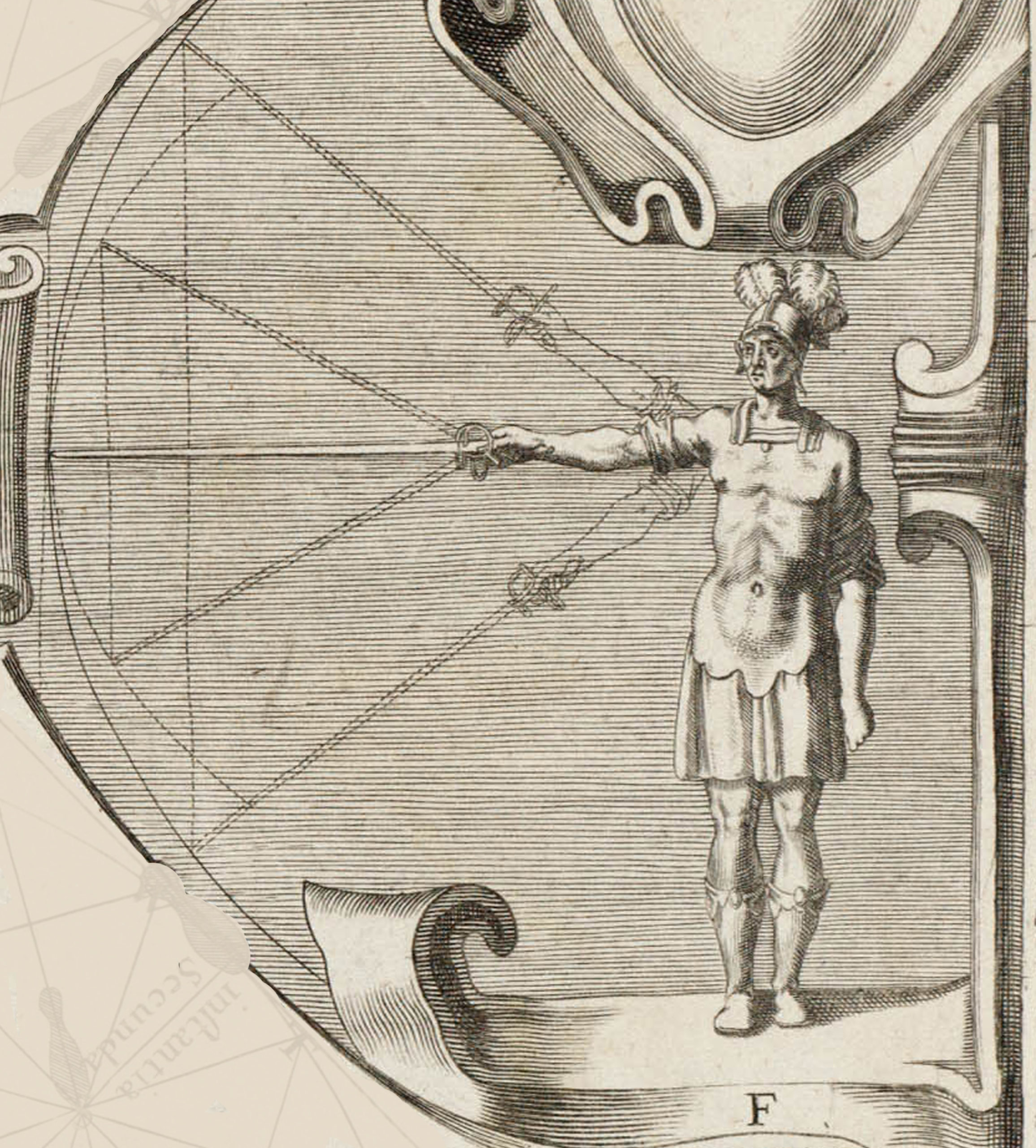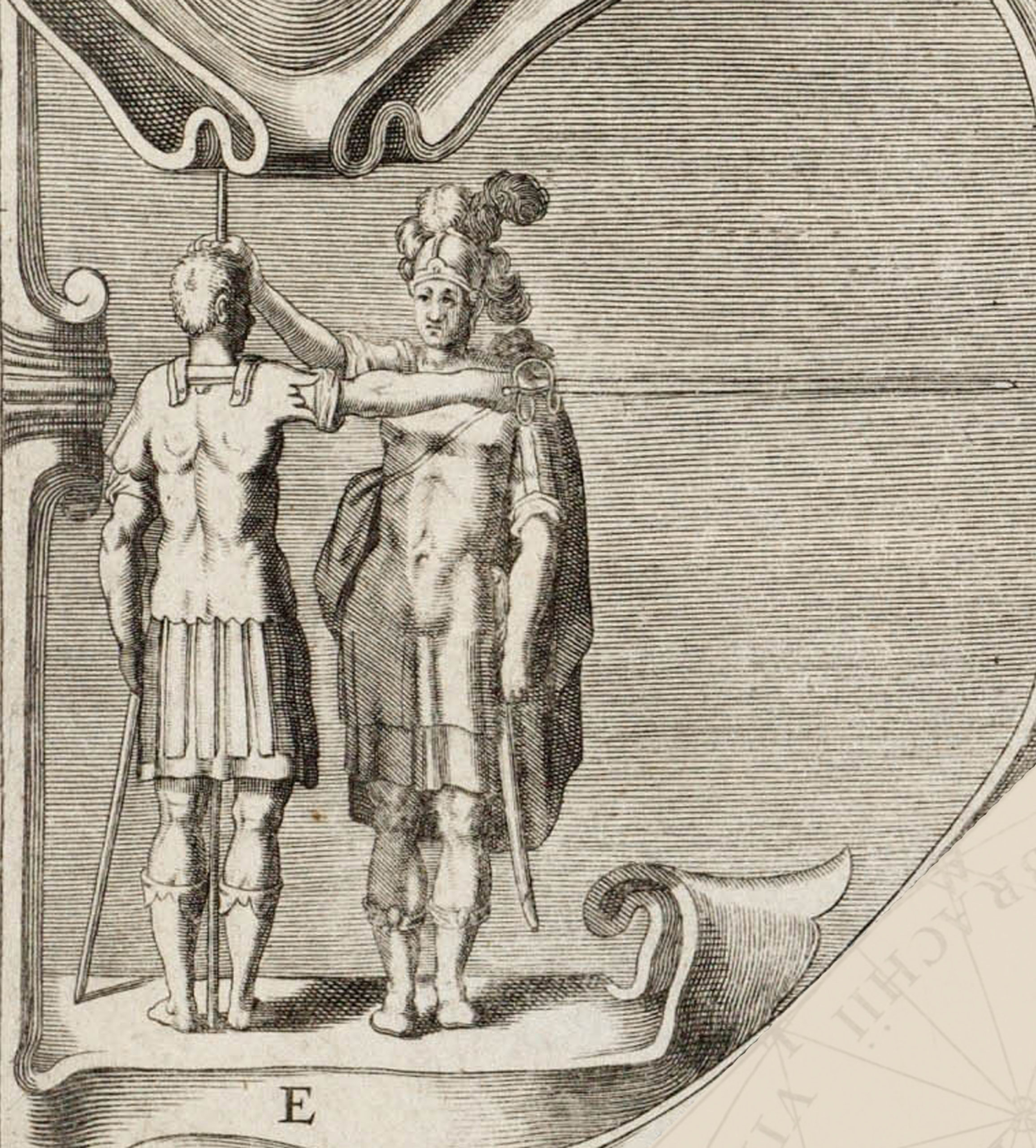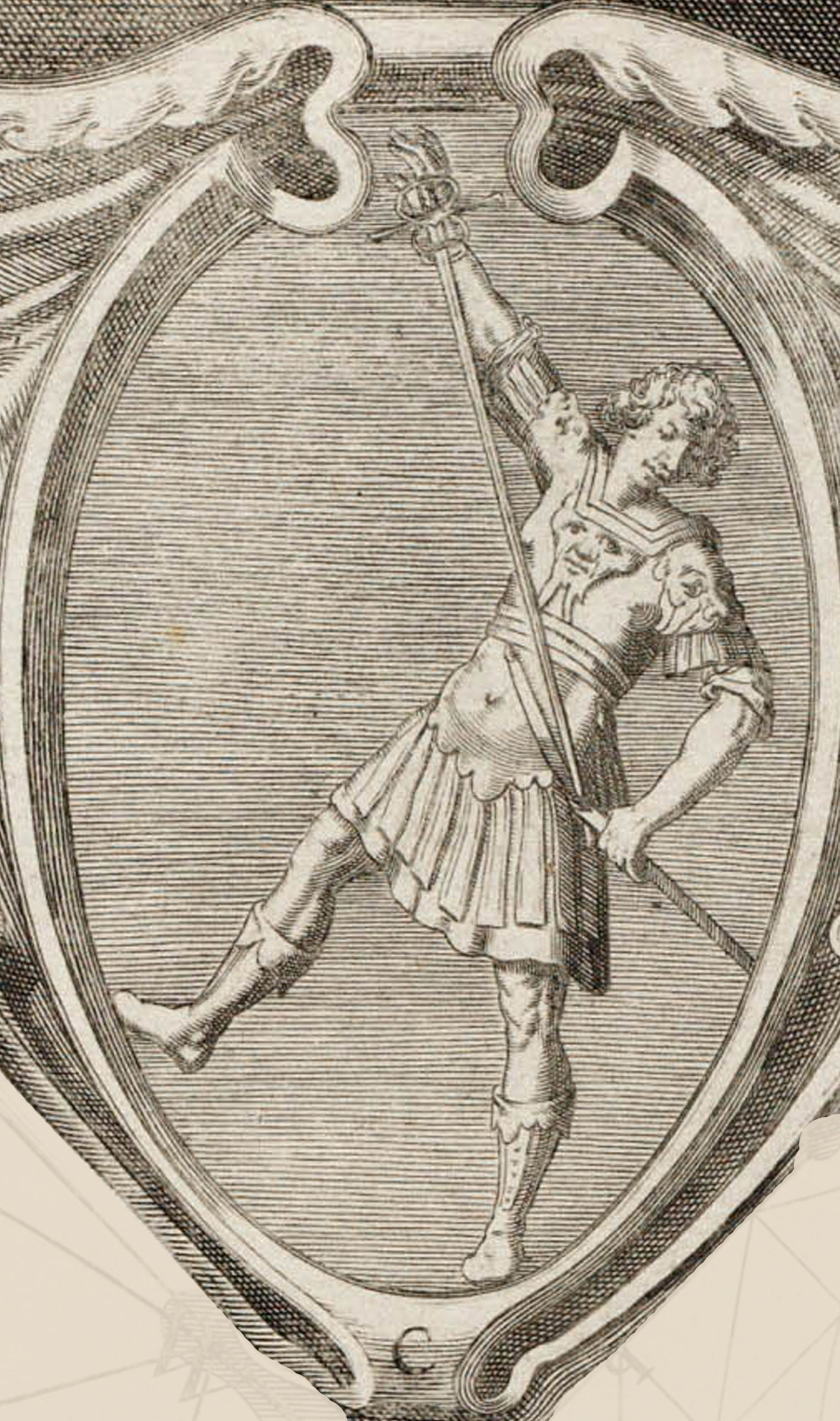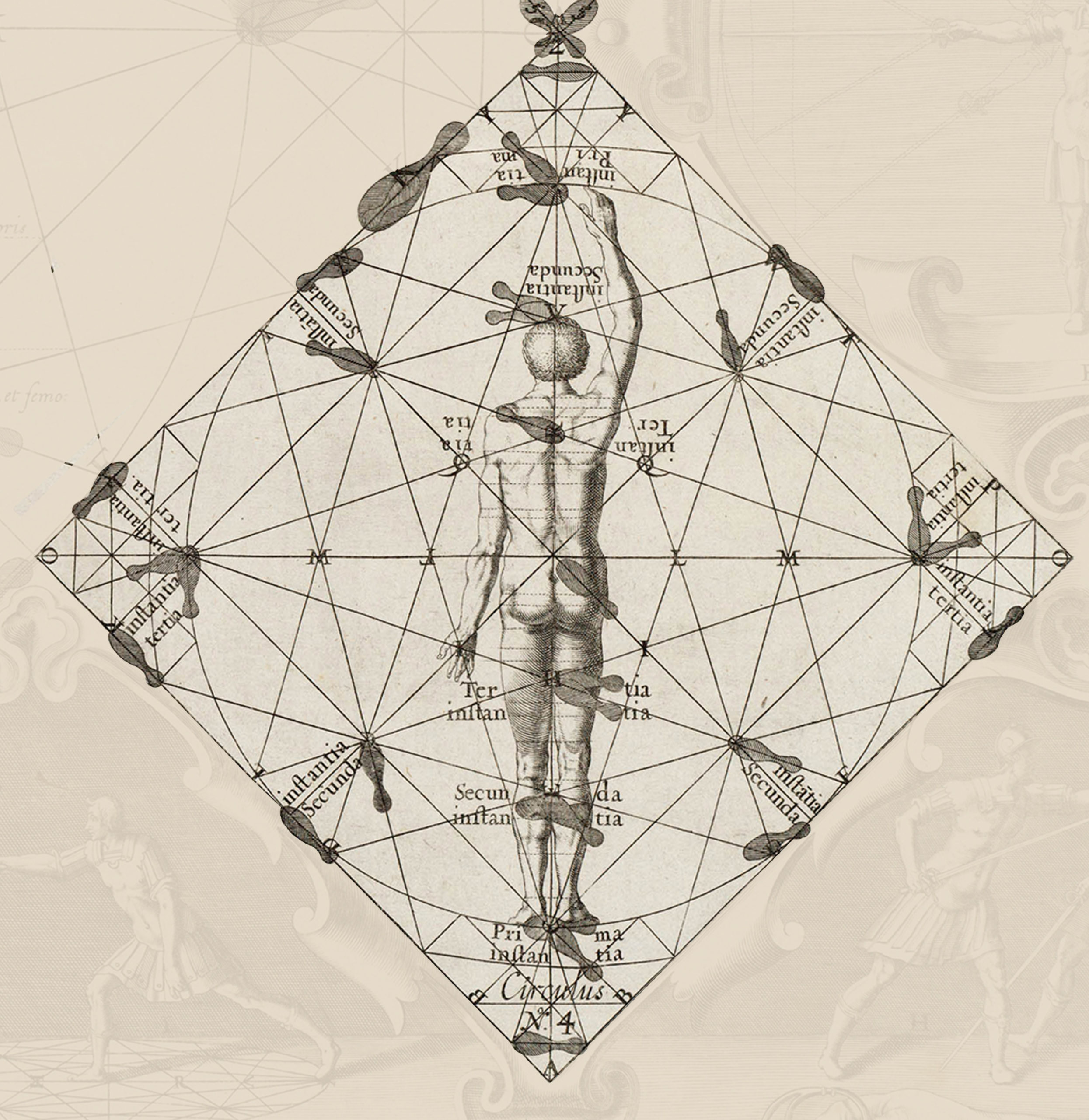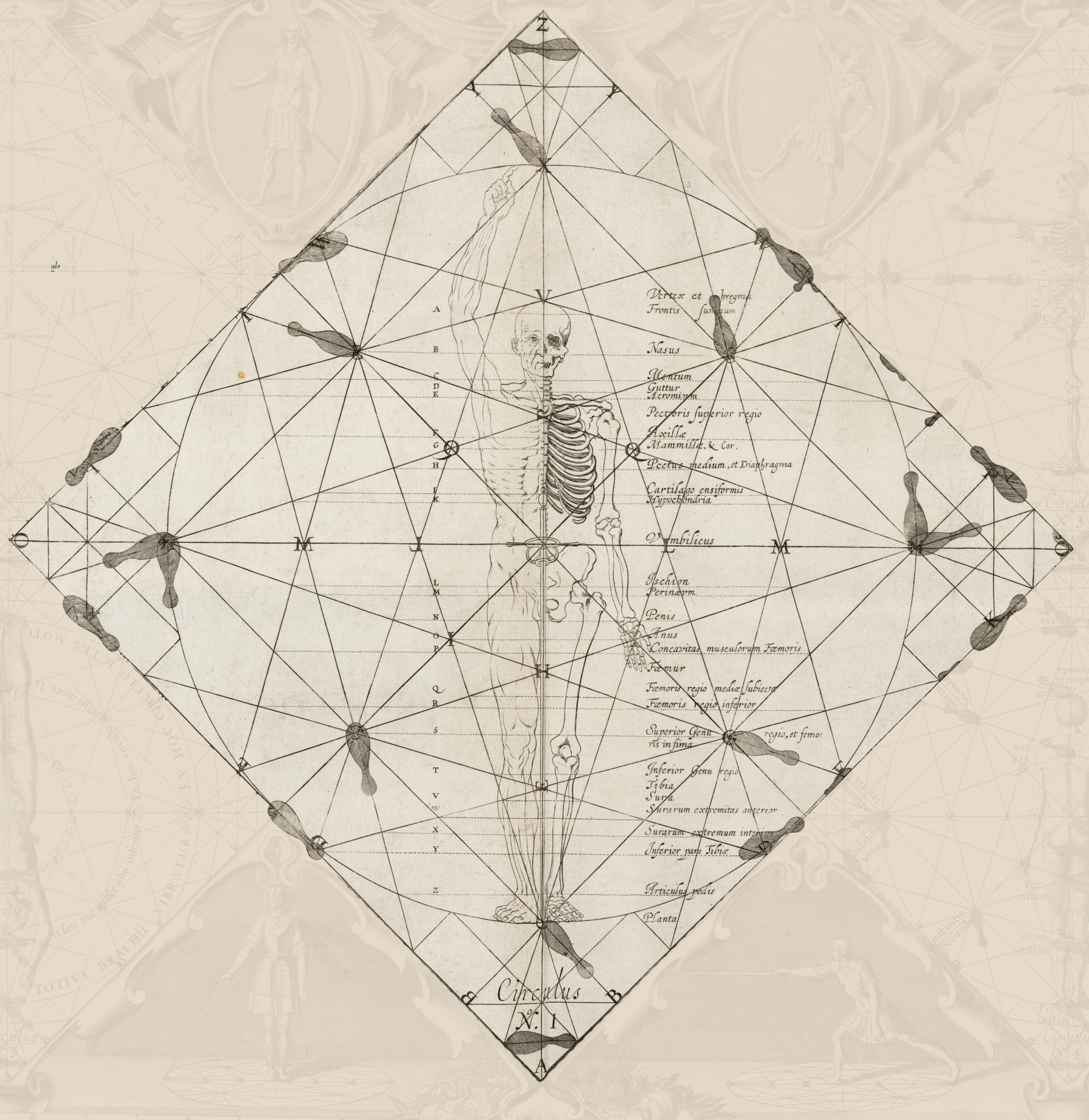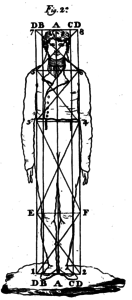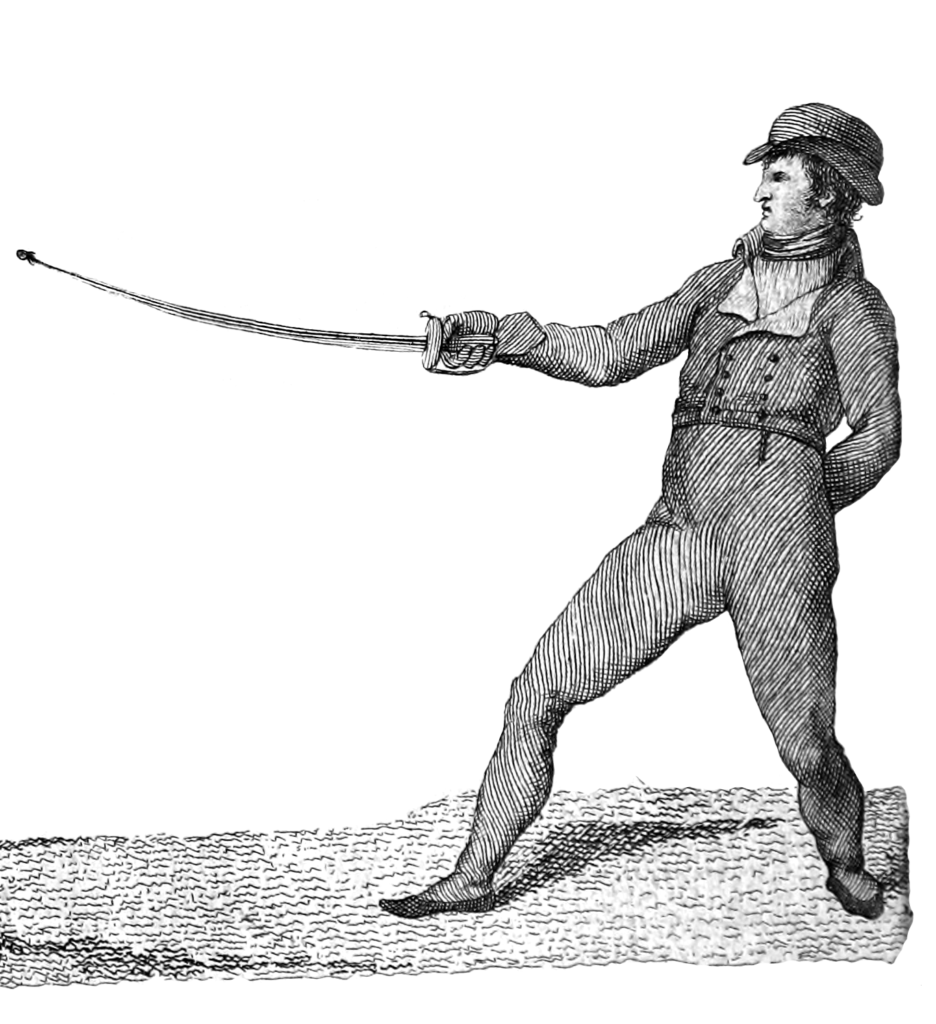Introductory Concepts and Terminology:
43. The combatants will always be obligated to move from their places to respond to the movements of the other, to provide the defense and offense of the ready weapon in its handling. I have already treated of some steps, leaving out still others which are very necessary which I call advances and withdrawals, for not having as above, a limited extension of the feet, you may travel by them however large an area the case requires, whether or not your opponent is skilled.
44. The steps with which one fighter approaches the other I call advances, and withdrawals are those with which they separate; moreover as it is necessary to be careful always to keep the proportional distance, it is necessary to use diverse steps, be they advances or withdrawals. These are reduced by our art to three species: a very short one called French, another, larger, has the name of Spanish, and the final and largest is called Italian. These advances and withdrawals are always executed in two times with the exception of the Spanish and Italian withdrawals, which are often made in one, in which case they are called Spanish and Italian Saltos. How to distinguish the times and execution of these advances and withdrawals will be explained in the subsequent paragraphs.
French Advance and Withdrawal:
45. The competitor is free to assert themselves at any distance, but suppose you have chosen nine feet. In this case, it is necessary from the offensive stance to attack forward in the first tempo, bringing the right foot one third of the distance to the enemy, and the left foot in the second time, following in the same amount so as not to lose the assumed stance and choose with this the measure of common defense (AQ) of eight feet. This method of approaching is the French advance in two times. You can instead assert your place at nine feet distant, from seven and, in this case, go backwards with the left foot in the first time, one third, following in the second an equal space without losing the preparatory stance you are lying in. This is the French withdrawal in two times.
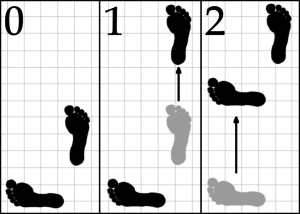
Exercise – French Advance:
- Begin in the offensive stance.
- Forward foot advances.
- Rearward foot closes forward back to stance.
- End in the offensive stance.
- Reverse this order for the French withdrawal.
Spanish Advance and Withdrawal:
46. If the distance to the contrary exceeds nine feet, approach with the Spanish advance, walking with your left foot to join it to, or near, the right heel (without extending the leg), and from this posture take with the right foot the offensive stance, this should be repeated as many times as the enemy retreats. The withdrawal of this step is the same size and is done in the preparatory stance, starting with the right foot, unite it with the left without extending the legs, and take the rearward stance. This withdrawal occurs when the enemy attacks advancing, however often they decide to do it.
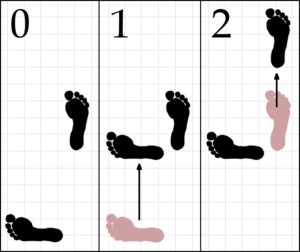
Exercise – Spanish Advance:
- Begin in offensive stance. Roll your weight onto the forward foot (0).
- Rearward foot is advanced up to the heel of the forward foot (1).
- Forward foot advances to re-form stance. Finish in offensive stance (2) .
- Reverse this order for the Spanish withdrawal
Italian Advance and Withdrawal:
47. The Italian Advance should be used in the case where it is necessary to advance over much ground, and is as follows: begin in the offensive stance without extending the legs, place the heel of the left foot beyond the point of the right, and this will take its corresponding place to return to your stance. The withdrawal of this motion differs from the Spanish in that the right foot is passed back and beyond the place where the left is firm, taking from there the preparatory stance. The amount that one foot moves to the other in this advance and withdrawal will be dictated by the need to choose the measure of common defense. In these last two advances and withdrawals, bringing the feet together makes the first time, separating them to take the corresponding stance is the second.
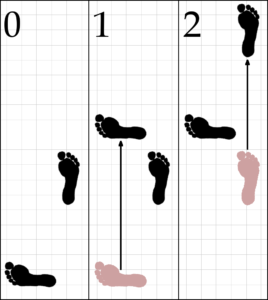
Exercise – Italian Advance:
- Begin in offensive stance. Roll your weight onto the forward foot (0).
- Rearward foot is advanced past the toe of the forward foot (1).
- Forward foot advances to re-form stance. Finish in offensive stance (2).
- Reverse this order for the Italian withdrawal.
Saltos or Leaps:
48. Need often demands that the Spanish and Italian withdrawals be executed with greater velocity, and then they take the name of Spanish and Italian Saltos. Salto is a withdrawal in one time: to execute the Salto, make the right foot walk to join the other; but before it is set, the left should already be in the air, moving backwards to support the body which is thrown quickly back so that the two are made in almost a single time to form the preparatory stance.

